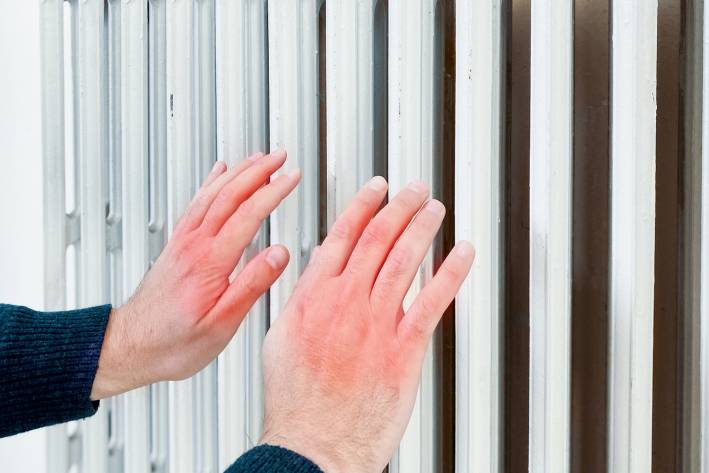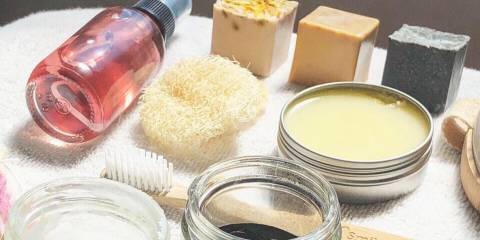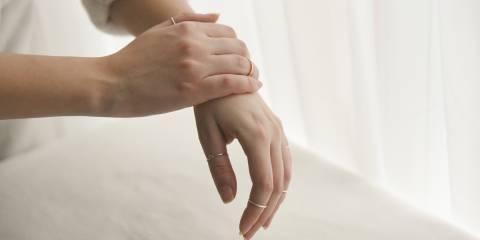Background
Frostbite is caused by extreme cold, and is most likely to happen in body parts farthest from the heart and those with large exposed areas.
Three Stages of Frostbite
Frostnip (stage 1)
First degree frostbite is called “Frostnip.” This is a superficial cooling of tissues without cellular destruction that causes skin to appear yellow or white. There may also be slight burning sensations. This stage of frostbite is relatively mild and can be reversed by the gradual warming of the affected area.
Chilblains (stage 2)
Second degree frostbite is called “chilblains.” These are superficial ulcers of the skin that occur when a predisposed individual is repeatedly exposed to cold. This stage is characterized by the disappearance of pain and the reddening and swelling of the skin. Treatment in this stage may result in blisters and it may also peel the skin.
Frostbite (stage 3)
Third degree frostbite involves tissue destruction and results in waxy and hard skin. It is at this stage that the skin dies and swelling may occur as a result of the lack of blood.
If third degree frostbite is not treated immediately, the damage may be permanent. Frostbitten areas may turn discolored, purplish at first, and soon turn black. After a while nerve damage becomes so great that feeling is lost in the frostbitten areas. Blisters will also occur. If feeling is lost in the damaged area, checking it for cuts and breaks in the skin is vital. Infected open skin can lead to gangrene and amputation. Extreme frostbite without treatment may result in the frostbitten fingertips falling off, as blood is unable to circulate to the affected areas.
Factors that contribute to frostbite include extreme cold, wind, inadequate clothing, wet clothes, and poor circulation. Poor circulation can be caused by tight clothing or boots, cramped positions, smoking and alcohol use.
Prevention
People working in chemical laboratories should take precautions to wear gloves and other safety equipment when using extremely cold liquids such as liquid nitrogen.
In general:
- Find shelter early if caught in very cold weather. This is especially important if the weather is windy, as wind chill can greatly reduce the time it takes for frostbite to set in. Even a small cave, ditch, hollow tree, or vehicle can help reduce the chances of frostbite.
- Increase physical activity to maintain body warmth, especially in the hands and feet. If without gloves or with inadequate gloves, hands should be kept inside clothing next to the body to stay warm. Extra clothing such as scarves or underwear can be placed around the toes. The face, especially the nose, should be covered with a scarf or other garment.
People susceptible to frostbite should wear woolen socks, gloves and caps in extreme cold. For frostbite in the feet, keeping feet in warm salt water will provide relief. Diabetes can also increase the risk of frostbite, so diabetics should take precautions on trips to ice-cold places. Dressing warmly in layers helps, and mittens are recommended over gloves.
Treatment
Treatment of frostbite centers on warming the affected tissue. If rewarmed tissue ends up refreezing, more damage to tissue will be done. Because of this, until the person is safely out of the cold, use passive warming, using body heat or being in a warm room, to aid the person's body in rewarming itself. This includes wrapping in blankets or moving to a warmer environment.
Excessive movement of frostbitten tissue can cause ice crystals that have formed in the tissue to do further damage. Caution should be taken not to rapidly warm up the affected area until further refreezing is prevented. Splinting and/or wrapping frostbitten extremities is therefore recommended to prevent such movement. For this reason, rubbing, massaging, shaking or otherwise applying physical force to frostbitten tissues in an attempt to rewarm them can be harmful.
Active Rewarming
Once the person is in a stable, warm environment, active warming can be achieved. If possible, this is best done in a clinic or hospital, as abnormal heart rhythms may occur.
When performed, active rewarming seeks to warm the injured tissues as quickly as possible without burning them. This is desirable, as the faster tissue is thawed, the less tissue damage occurs. Active rewarming is usually achieved by immersing the injured tissue in a water-bath that is held at 40-42 degrees C (104-107 degrees F).
Skin Repair
To help skin healing in general, drinking aloe vera juice can be remarkably helpful. This can even be found in Safeway supermarkets and Walmart’s in two-quart bottles (get the sugar free if available). Drink 8-16 ounces a day to help the skin heal. Also, apply aloe gel or cream to the skin (decreased tissue damage 400% in one rabbit frostbite study).





